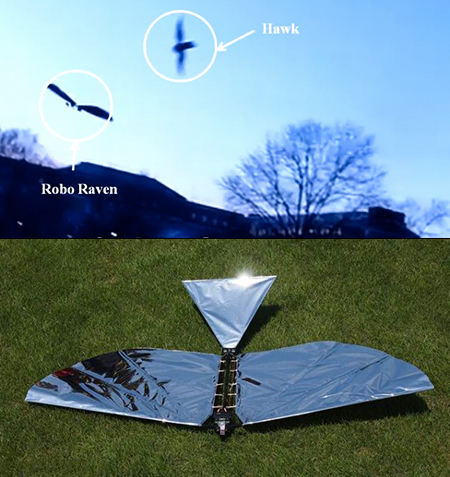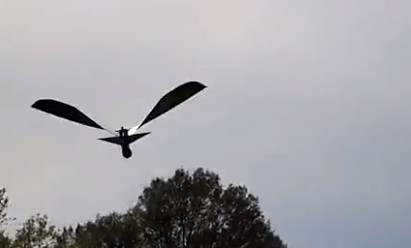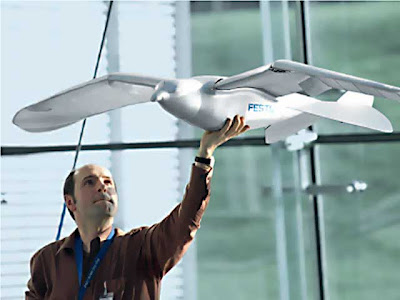It’s one thing to create a flying machine. It’s quite another to create one that has the ability to fly like a bird. Birds do amazing things in flight. They can turn on a dime. They can hover. They can glide. They do aerial acrobatics that, if tried by an airplane or helicopter, would lead to a stall or crash. Humans have never duplicated the complexity of bird flight. At least not until now.
A team from the Robotics Center at the University of Maryland have built Robo-Raven. To emulate a bird’s lightweight skeleton the engineers at Maryland used polymers and fashioned the bird’s parts using a 3D printer and laser. In addition they developed a number of software algorithms to accurately mimic bird flight. You can watch it in flight and decide for yourself. Is this a bird or what? It can do dives, back flips, soar and dip. It can move each wing independently. It is so much like a bird that it even confused a hawk who tried to attack it thinking it was alive. And when aloft often attracts birds who fly along side it.
Robo-Raven is about 60 centimeters (over 2 feet) in length and weighs less than a can of cola. It’s wings use two programmable motors powered by batteries. The wings can act independently or synchronize. A radio transmitting hand controller instructs Robo-Raven during flight.
Robo-Raven is not the only robotic bird out there. A TED Talk in July of 2011 introduced Smart Bird, a robot over a meter (over 3 feet) in length with a 2 meter (6.5 foot) wing span, an internal carbon fiber framework and a skin covering that makes it resemble a herring gull. Not quite as adept as Robo-Raven, Smart Bird wowed the TED audience when it made its debut.











